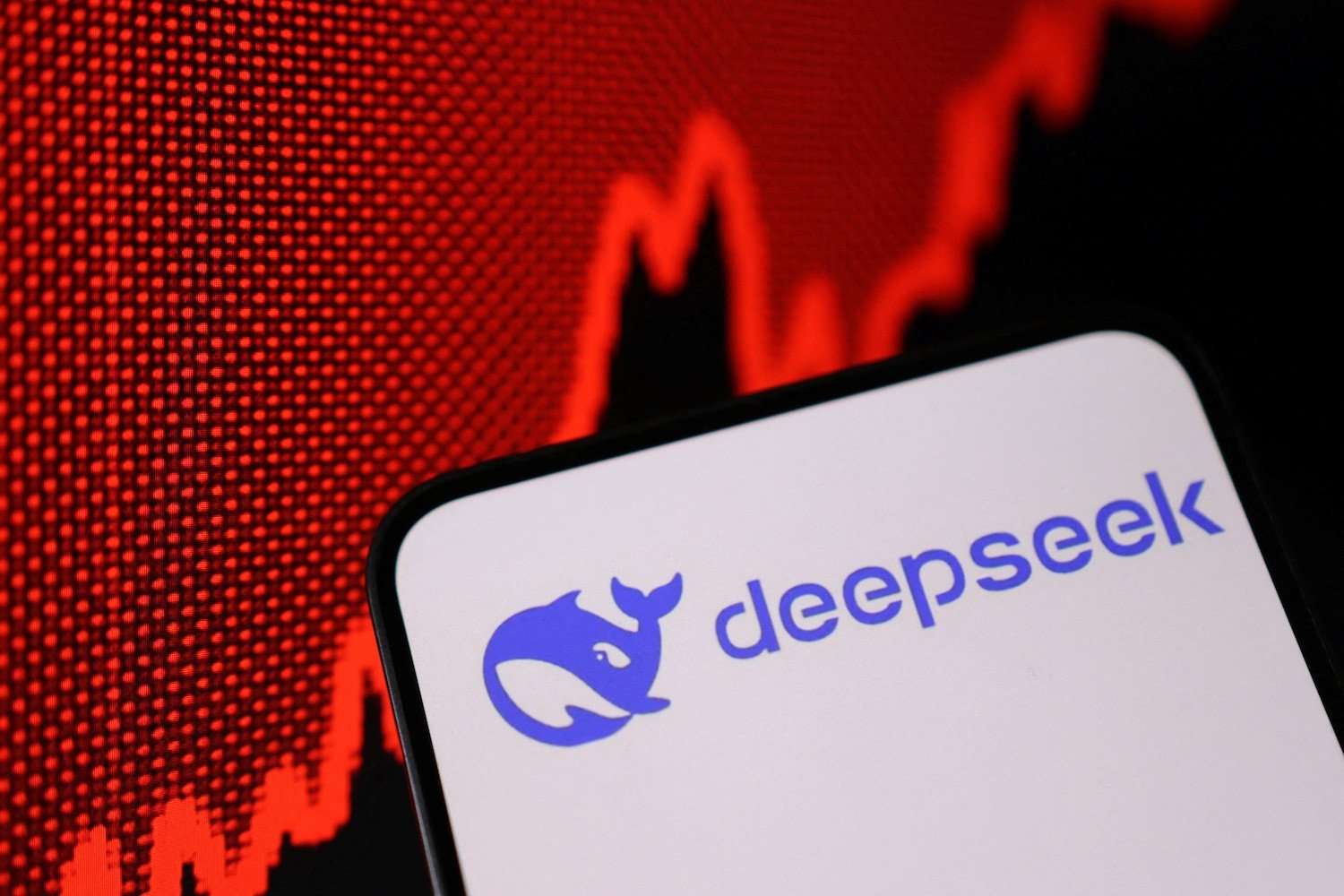Introduction: The Rise of a Chinese AI Giant
In the ever-evolving world of artificial intelligence (AI), innovation knows no borders. While many associate cutting-edge AI technology with the United States, a Chinese AI startup, DeepSeek, has emerged to astonish the global tech community. DeepSeek’s AI models are not only outperforming some of the best American counterparts but also demonstrating cost-effectiveness and efficiency that have caught the attention of industry giants and investors worldwide.
The world was left stunned when, on January 27, stock markets across the U.S. and Europe experienced a massive shake-up. Nvidia, the U.S.-based AI chip leader, saw its share prices plummet by 17%, erasing a staggering $600 billion from its market value. This dramatic drop was triggered by the rapid rise of DeepSeek, a Chinese startup that had launched a highly competitive AI model in record time.
A New Wave of AI Innovation: DeepSeek’s Impact
The Unexpected Success of DeepSeek
When DeepSeek entered the AI race, few expected the Chinese startup to rival the best models developed by companies like OpenAI, based in the U.S. What makes DeepSeek’s success even more remarkable is that it achieved this feat in less than a year. While the U.S. had restricted Nvidia from selling high-end AI chips to China, DeepSeek managed to train its models using a fraction of the investment made by American counterparts.
Monis Rahman, the CEO of Dukan and Chairman of Rozee, emphasized the surprise of the West at how quickly DeepSeek’s AI models gained prominence. The Chinese AI startup achieved this without the extensive resources of its American competitors, managing to produce a superb AI model with just one-twentieth of the investment of companies like OpenAI.
Cost Efficiency and Power Consumption
Another major breakthrough with DeepSeek’s model lies in its cost-efficiency. The inference cost of using DeepSeek is approximately 1/27th of the cost of OpenAI’s equivalent models. DeepSeek’s efficiency in algorithm design has enabled it to utilize less expensive Nvidia GPUs, leading to significantly lower power consumption. This is especially important in the context of AI’s future, where energy consumption is a limiting factor in scalability and performance.
DeepSeek’s efficient algorithms allow for faster and more affordable AI applications, making them accessible to a larger number of companies and organizations. The company’s commitment to low-cost AI solutions is likely to be a game-changer in the industry, especially as energy efficiency becomes a critical concern for tech companies worldwide.
The Open-Source Revolution: What Does It Mean for the AI Ecosystem?
DeepSeek’s Open-Source License: A Strategic Move
One of the most significant aspects of DeepSeek’s rise is its decision to make its AI model open-source. By offering its model under the permissive MIT License, DeepSeek has allowed anyone to install and run the AI on their own servers, ensuring data privacy while benefiting from cutting-edge technology. This move is expected to put pressure on other AI companies to follow suit, potentially leading to a broader shift in how AI models are shared and distributed across the globe.
The open-source approach gives developers, companies, and institutions the freedom to use DeepSeek’s AI technology without the financial barriers that often come with proprietary models. With this, DeepSeek is poised to accelerate the democratization of AI technology, allowing smaller players to innovate and compete on a more level playing field with the giants of the industry.
The Global Implications: AI for the Masses
The impact of DeepSeek’s technology goes beyond cost savings and open-source benefits. By dramatically reducing the energy requirements for AI models and making them more accessible, DeepSeek is likely to drive AI adoption in industries and regions that previously lacked the infrastructure or resources to implement AI at scale. This could lead to a more equitable distribution of AI technologies across the globe, including in developing nations that may have been left behind by the high costs associated with traditional AI models.
As AI technology becomes cheaper, more efficient, and easier to implement, it will open the door for countless new use cases, ranging from automation to personalized healthcare. The economic benefits of these advancements are enormous, particularly in regions that have previously been underserved by AI solutions.
China’s Strategic Move: Leading the Charge in AI Innovation
From Imitator to Innovator: China’s Role in AI Development
Liang Wenfeng, the 40-year-old founder of DeepSeek, has been vocal about China’s transition from a follower in technological innovation to a leader in AI. For years, China’s tech industry has been seen as lagging behind the United States, often criticized for imitating rather than creating new technologies. However, DeepSeek’s success marks a significant shift in this perception, positioning China at the forefront of AI innovation.
Wenfeng’s vision is to ensure that China’s technological development is driven by originality and creativity, rather than replication. The success of DeepSeek serves as proof that China can lead the charge in AI innovation, showcasing the country’s growing capabilities in research and development.
AI as a Strategic Imperative: The U.S.-China Race for Dominance
The United States views staying ahead of China in the AI race as a matter of national security. The competition to dominate AI development is not just about technological superiority but also the ability to control the interpretation of global information. The U.S. has already implemented measures such as chip embargos to slow China’s progress, fearing the rise of a competitive Chinese AI sector.
Despite these efforts, DeepSeek’s success indicates that the U.S. may face an increasingly difficult challenge in maintaining its lead in AI. As China continues to innovate at a rapid pace, the global balance of technological power may shift, leading to greater competition and collaboration between the two nations.
The Future of AI: More Accessible, Efficient, and Powerful
AI for the Global South: A New Era of Technological Empowerment
The rise of DeepSeek is not just a significant milestone for China; it represents a broader shift in the AI landscape, particularly in the Global South. With lower-cost, more energy-efficient models, DeepSeek’s technology is poised to empower nations in Africa, Latin America, and Asia to develop their own AI solutions. This could lead to a more inclusive and diverse AI ecosystem, where a broader range of voices and ideas can shape the future of the technology.
Conclusion: The Dawn of a New AI Era
The emergence of DeepSeek as a powerful and cost-effective AI model is a testament to the potential of algorithmic ingenuity and open-source collaboration. With its efficient models, open-source philosophy, and commitment to energy savings, DeepSeek has revolutionized the AI industry and raised the bar for competitors worldwide. As AI technology continues to evolve, DeepSeek’s success signals the beginning of a new era of innovation that could have far-reaching implications for the global economy and society.
FAQs
1. What is DeepSeek, and why is it significant?
DeepSeek is a Chinese AI startup that has developed a highly efficient and cost-effective AI model. Its open-source approach, low energy consumption, and affordable pricing have made it a major player in the AI landscape, challenging established American companies like OpenAI.
2. How does DeepSeek’s AI model compare to American models?
DeepSeek’s AI model is significantly cheaper to run and train than its American counterparts, with costs as low as 1/27th of what OpenAI requires. It also consumes much less power, making it more efficient and accessible to a wider range of industries.
3. Why is DeepSeek’s open-source license important?
DeepSeek’s open-source approach allows anyone to use and modify its AI models without restrictions. This is expected to accelerate AI adoption and innovation globally, especially in countries and industries that previously lacked the resources to develop or deploy AI.
4. How has the rise of DeepSeek impacted global markets?
DeepSeek’s success has caused significant shifts in global markets, especially in the energy and tech sectors. U.S. companies, such as Nvidia and energy giants like Chevron, have seen stock prices fall due to the increased efficiency and affordability of DeepSeek’s AI models.
5. What are the geopolitical implications of DeepSeek’s success?
DeepSeek’s rise has geopolitical ramifications, particularly in the U.S.-China technological race. As China strengthens its position as a leader in AI, it challenges U.S. dominance in the tech industry and may shift the global balance of power in AI development.



